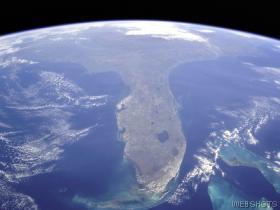Over
the course of this century, the relationship between the human world
and the planet that sustains it has undergone a profound change.
When the century began, neither human numbers nor technology had the
power to radically alter planetary systems. As the century closes,
not only do vastly increased human numbers and their activities have
that power, but major, unintended changes are occurring in the atmosphere,
in soils, in waters, among plants and animals, and in the relationships
among all of these. The rate of change is outstripping the ability
of scientific disciplines and our current capabilities to assess and
advise. It is frustrating the attempts of political and economic
institutions, which evolved in a different, more fragmented world,
to adapt and cope. It deeply worries many people who are seeking
ways to place those concerns on the political agendas . . .
The
Commissioners came from 21 very different nations. In our
discussions, we disagreed often on details and priorities.
But despite our widely differing backgrounds and varying national
and international responsibilities, we were able to agree to the
lines along which institutional change must be drawn.
We
are unanimous in our conviction that the security, well-being, and
very survival of the planet depend on such changes, now.
Our Common Future (1987)
Reading
By now you should
have questions and reactions--please bring these to class. Do
you think this is or is not an important crisis?
Do you see signs of hope
and success? How does this reading make you feel?
What is sustainable development?
Begin to develop a working definition of "sustainability".
What "common endeavors"
can we begin? What can the United States do? What can
you do?
Group Presenting
The task of each group is to teach the
rest of the class about the challenge presented by one of the chapters
in Part II of Our Common Future, "Common Challenges".
Through reading, research to update the problem statement, and collaborative
discussion, you are preparing to present the problem and possible
solutions to the rest of the class.
The following guidelines will help shape
your presentation.
1. Summarize the chapter, what is
the issue?
2. Update the information, using current
available information – Internet, library, etc.
3. Consider potential solutions or
alternatives.
4. What role might government policy
play in achieving sustainability? How might NGOs become involved
and make a difference?
5. What responsibility should we,
as individuals, take to achieve sustainability related to the challenge
of this chapter? Be thorough and specific. Describe personal actions
we can take.
6. Consider hope. How hopeful are
you that we can meet the challenge of this chapter? Where does your
hope come from?
Using any presentation style you choose
(PowerPoint, skit, lecture, video, traditional lesson, etc.) plan
a 15 minute presentation to teach the rest of us about your research.
You will have time during class four to work together to outline your
presentation and divide responsibilities. All groups will present
during Class Five. We will provide time for all groups to meet with
each other at the beginning of Class Five to prepare.
The presentation will be evaluated by
your instructor and figured into your grade under participation.
This will constitute five percent of the total course grade.
Ecological
Footprint Calculator
Click on the above
link to access a website that will help you to calculate your own
ecological footprint.
Home Syllabus
Syllabus Introduction
Introduction Required
Texts
Required
Texts Field
Trips
Field
Trips Journal
Writing
Journal
Writing Final
Project
Final
Project
Writing
Papers Weblinks
Weblinks Floridiana
Floridiana Rubrics
Rubrics

 Florida
Gulf Coast University
Official Website 2003
Florida
Gulf Coast University
Official Website 2003

